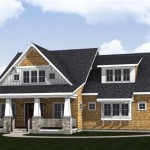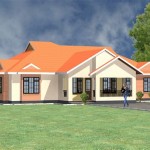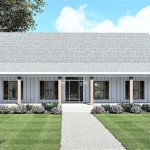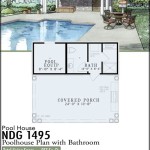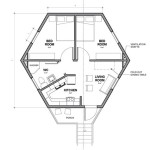Small Mountain Home House Plans: Essential Considerations
Building a small mountain home requires careful planning and consideration of unique factors. Whether you're looking for a cozy cabin or a spacious retreat, these essential aspects will guide you towards creating a dream home that meets your needs.
Location and Site Selection
The location and site of your mountain home will significantly impact its design and functionality. Choose a site with ample sunlight, drainage, and access to utilities. Consider the slope and elevation of the land to minimize grading costs and maximize views. Also, consider the proximity to existing roads and trails, as well as the surrounding natural environment.
Climate and Weather Conditions
Mountain homes are exposed to a wide range of weather conditions, including extreme temperatures, snow, rain, and wind. Design your home with insulation, roofing, and windows that can withstand these elements. Consider a passive solar design to take advantage of natural heat gain during winter months. Also, incorporate energy-efficient appliances and heating systems to reduce utility costs.
Building Materials and Construction
Durability and low maintenance are key considerations for mountain homes. Choose building materials that can withstand the harsh climate and resist pests. Opt for materials like stone, wood, and metal. Consider using sustainable materials that are both environmentally friendly and durable. Pay attention to construction details such as proper waterproofing and insulation to prevent moisture problems and ensure the home's longevity.
Floor Plan and Layout
Maximize space and create a functional floor plan. Keep the layout simple and efficient, with open living areas and minimal hallways. Utilize multi-purpose rooms that can serve multiple functions. Consider elevated ceilings to create a sense of spaciousness. Incorporate large windows and skylights to bring in natural light and showcase the stunning mountain views.
Exterior Design and Aesthetics
The exterior design of your mountain home should blend seamlessly with the surrounding environment. Opt for rustic materials and earthy colors that complement the landscape. Use natural stone,木材、and metal to create a timeless aesthetic. Consider incorporating elements like porches, decks, and outdoor fireplaces to extend the living space outdoors and connect with the natural surroundings.
Sustainability and Environmental Impact
Mountain homes should be designed with sustainability in mind. Incorporate energy-efficient features, source environmentally friendly materials, and utilize renewable energy sources like solar panels. Consider water conservation measures, such as rainwater harvesting and low-flow fixtures. By incorporating sustainable practices, you can reduce environmental impact and create a healthier home for your family.
Additional Considerations
Allow for ample storage space to accommodate seasonal gear and equipment. Consider a dedicated mudroom to keep outdoor items organized and prevent dirt and moisture from entering the house. Plan for outdoor living spaces, such as decks and porches, to enjoy the surrounding nature and extend the living area beyond the walls of the home.

Small Mountain House Plans Houseplans Blog Com

Small Mountain House Plans Houseplans Blog Com
:max_bytes(150000):strip_icc()/whisper-creek-b65299d0def24eb28d88f38f7581e118.jpg?strip=all)
34 Best Mountain House Plans For Your Vacation Home

Small Mountain Cabin Plan By Max Fulbright Designs Floor Plans House

Small Cabin Designs With Loft Floor Plans

Mountain House Plans The Plan

Small Modern Mountain House Plans 53c Desain Eksterior Arsitektur

Small Mountain House Plans Houseplans Blog Com

Heartland Cottage Mountain Home Plans From House

Small Modern Mountain House Plans 53c Craftsman


